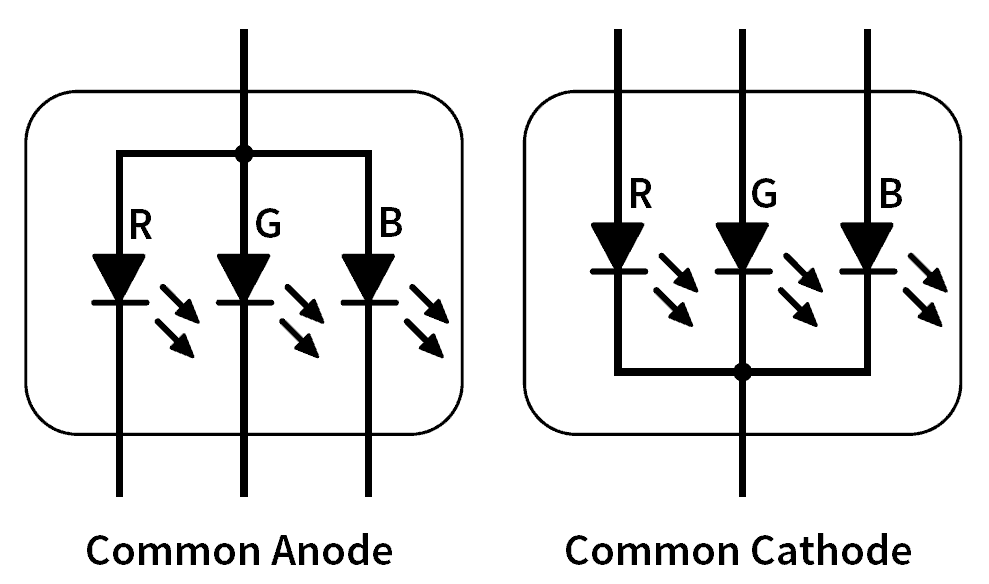LED is abbreviation for Light Emitting Diode. Led display, A device that uses LED pixels to display information such as text, images, and videos, usually including LED screen and the related display control system.
Led Board Types and Characteristics
Indoor or outdoor led display
According to the use environment, it is divided into indoor LED display and outdoor LED display
Indoor LED display is used in indoor environment. This type of display has moderate brightness, large viewing angle, light weight and high pitch size and resolution. It is suitable for close viewing, from 0.5m to 10m maybe.
Outdoor led screen is used for outdoor environment. The luminous brightness of the outdoor display is generally above 5000cd/square meter (different orientations, different brightness requirements), can be used in direct sunlight, the billboard screen size will be large, the viewing distance is far normally, usually tens of meters away, and the screen body has good waterproof and dustproof ability.
Fixed or rental led display
According to the installation way, it is divided into fixed LED display and rental LED display
Fixed led screen is install in fixed place for advertising or digital purpose, which can not move.for example, airport, restaurant, shopping mall building wall.
Rental led screen is portable and mobile for events stage purpose, such as concerts, sports, conference room. Led screen comes in different shape, design and size, the flexibility enables to enhance the shows and strengthen the show’s effect.
According to the usage, led display also could divide into advertising digital signage, sports led signage, transparent led display, floor led screen and so on.
Product Key Indicators And Requirements
1. Pixel point spacing: the distance between the center points of two adjacent pixels of the LED display screen, which is what we now call “pitch”, such as pitch 3, pitch 6, the point spacing is from two the distance between two pixels reflects the pixel density, the dot pitch and pixel density are the physical properties of the display screen; the information capacity is the quantity unit of the information carrying capacity displayed at one time by the pixel density per unit area. The smaller the dot pitch, the higher the pixel density, the more information capacity can be displayed per unit area at one time, and the closer the viewing distance is. The larger the dot pitch, the lower the pixel density, the less information capacity that can be displayed per unit area at one time, and the longer the distance suitable for viewing.
2. Driving technology: LED display products currently use two technologies, common anode and common cathode. The current mainstream products in the market use common anode technology. Compared with common anode technology, common cathode technology is more energy-saving and is the future development direction of LED display.

3.Max brightness: outdoor screen: high brightness, usually not less than 5000cd/m2. Indoor screen: low brightness, usually the maximum brightness is 600cd/m2. The brightness can meet the ambient brightness. Too high or too low will not only make the audience’s eyes uncomfortable but also increase unnecessary cost investment.
4. Gray scale: The maximum brightness level between the darkest and the brightest of any primary color of the LED display. Each grayscale object has a brightness value from 0% (white) to 100% (black). Under suitable brightness, the fuller the grayscale, the better the display effect.
5. Color temperature: Color temperature is a physical quantity used in lighting optics to define the color of a light source. The color temperature of led screen is adjustable.
Single-point brightness and chromaticity correction technology: use different currents to make LEDs with different brightnesses the same brightness. This technology guarantees the good consistency of the display.
6. LED single-point correction technology is the core of LED display technology. It can make hundreds of thousands of LED lights on the same panel emit uniform light, so that the screen brightness and chromaticity are highly uniform.
7. Viewing Angle: The larger the viewing angle of the screen, the clearer and more uniform the screen image viewed on the left and right sides of the screen and in the up and down direction.
Main factors choosing led display from china
1.Clear use requirements
As mentioned above, indoor LED display and outdoor LED display have different application environments and essential differences in performance, so you must choose according to the needs of the use environment. In addition, according to different use requirements, choose the suitable one.
2. Product performance considerations
Product performance considerations need to pay attention to the above 7 key indicators, and select them according to the actual use environment and requirements.
3.Choosing right screen size
There are various size in the market, even it can be customized. When you are considering the screen size, the viewing distance should be take into account.
4. Reliable china factory
Shenzhen city is not only China’s, but also the world’s capital of electronics manufacturing. Shenzhen has the well established and efficient components and materials supply chain. Ledtop Technology locaded in shenzhen, is manufactured based on strict quality standards and come complete with free spare parts and a 3-5 year comprehensive warranty.

